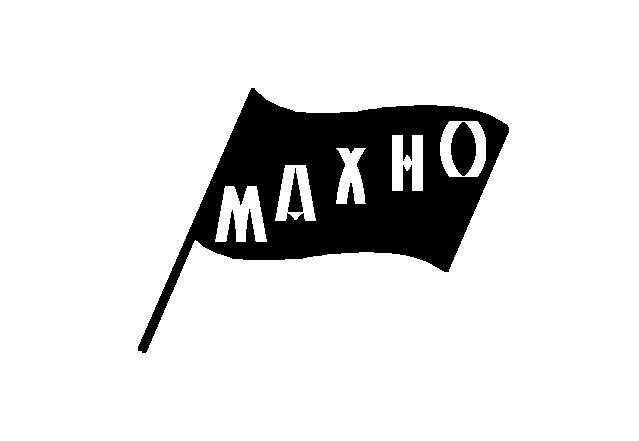
MAKHNO AND THE
MAKHNOVSHCHINA
.M Y T H S A N D I N T E R P R E T A T I O N S .

INTRODUCTION.
What would you do if you came across a photograph of a fictional character?. I mean a character not an actor in the role of that character but the actual individual who you believed was purely the invention of an author, It happened to me. The author Michael Moorcock used Nestor Ivanovich Makhno as a fictional supporting character in his fantasy 'The Entropy Tango'. Makhno is portrayed as a romantic revolutionary active in 1940's Canada and as an old man in 1970's Scotland. A couple of years after reading 'The Entropy Tango', I was reading through ‘Red Empire’, a book about the history of the Soviet Union, and 'BANG', a photograph of Makhno smiling at the camera. There was no real mention of Makhno in the book other than the caption to the photograph, indeed there is usually little on Makhno in book's written about the Russian Civil war other than a paragraph or two. For a writer researching a work on the Civil war they have to rely on sources that are usually either propaganda or based on propaganda from either Bolshevik or White Russian sources, both Whites and Reds had reasons to slander Makhno and his Makhnovshchina. Voline writing in the Preface for Peter Arshinov's 'History of the Makhnovist Movement', (both men having been involved in the movement) describes the Makhnovshchina as;
"an event of extraordinary breadth, grandeur and importance, which unfolded with exceptional force and played a colossal and extremely complicated role in the destiny of the revolution, undergoing a titanic struggle against all types of reaction, more than once saving the revolution from disaster".
Words you would perhaps expect from someone involved in the movement but no less true for that. Politically Makhno was an Anarchist and he has become a sort of saint to some Anarchists, while his detractors, the political inheritors of the Bolsheviks and Ukrainian nationalists still portray him as a bandit, as in many things the truth lies somewhere in-between these two extremes.
What do I hope to achieve?. The Makhnovist movement left little evidence and few traces and no monuments to its existence, most were destroyed along with much of the Ukrainian peasantry by the Bolsheviks, famine and war. The history of the movement has either been written by Bolshevik historians seeking to justify its destruction or by Makhnovist exiles, who sought to counter the 'official', version of events in the Ukraine coming from Soviet Russia. I want to show how and why different interpretations and myths about the Makhnovists and Makhno came about. The Makhnovists have been portrayed as little more than ignorant Kulak bandits yet they fought as a division in the Red Army. Allegations of Anti-Semitism have commonly been levelled at the Makhnovists yet many Jews were involved in the movement. The Makhnovists Anarchism has also been questioned not just by White Russians who claimed it was simply justification for banditry but also by Russian Anarchists. Nestor Makhno himself as the most potent and colourful symbol of the movement that bears his name has been a target for attack and for works of fiction. I hope to draw some conclusions on these issues. Voline’s Preface to Arshinov's history asks the reader to consider the following of the book which can be applied equally to this project;
"is it a serious and conscientious analysis, or a fantastic and irresponsible fabrication? Can the reader have confidence in the author, at least with respect to the events, the facts and the materials? Is the author sufficiently impartial, or does he distort the truth in order to justify his own ideas and refute those of his opponents?".
CHAPTER 1